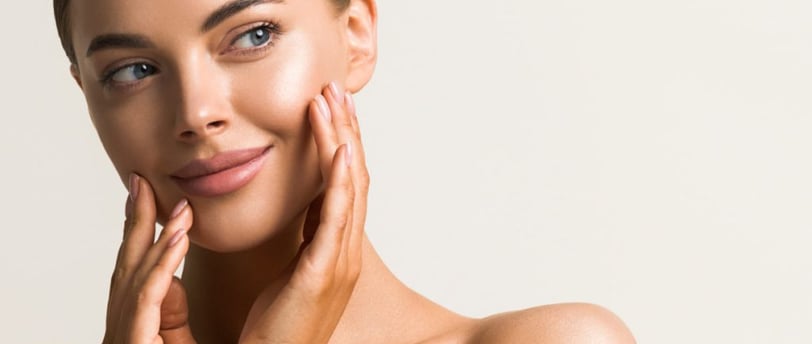Exploring Reflexology: A Holistic Approach to Rejuvenation
In an age where stress, chronic discomfort, and busy lifestyles often leave us feeling depleted, the pursuit of holistic well-being has never been more vital. Amidst a myriad of wellness practices, reflexology stands out as a unique and ancient therapy, offering a powerful pathway to balance and rejuvenation.
7/10/20253 min read


More than just a foot massage, reflexology is a precise modality based on the principle that specific points on the feet, hands, and ears correspond to organs, glands, and systems throughout the body. By applying targeted pressure to these "reflex zones," practitioners aim to stimulate the body's natural healing capabilities, release blocked energy, and promote a profound state of relaxation.
The Ancient Roots and Modern Revival of Reflexology
The practice of applying pressure to specific points on the body for therapeutic benefit has a long and rich history. The ancient roots and modern revival of reflexology can be traced back thousands of years, with evidence found in ancient Egyptian hieroglyphics dating back to 2330 BC, depicting foot and hand treatments.
Similar practices are also believed to have existed in ancient China and India. The modern understanding of reflexology largely developed in the early 20th century, primarily through the work of Dr. William H. Fitzgerald, an ear, nose, and throat specialist, who developed "Zone Therapy."
He observed that applying pressure to certain areas of the hands and feet could produce an anesthetic effect in corresponding body zones. His work was further expanded by physiotherapist Eunice Ingham in the 1930s, who meticulously mapped the reflexes on the feet and hands, establishing the charts widely used by reflexologists today. This blend of ancient wisdom and systematic mapping forms the foundation of modern reflexology.
How Reflexology Works: The Zone and Meridian Theories
At its core, how reflexology works: the zone and meridian theories, hinges on the concept of interconnectedness within the body. The primary theory, derived from Dr. Fitzgerald's work, is the "Zone Theory," which postulates that the body is divided into ten longitudinal zones, running from the head to the toes and hands.
Each zone is believed to contain specific organs, muscles, and tissues. Applying pressure to a reflex point within a zone on the feet or hands is thought to affect other areas within that same zone throughout the body.
Additionally, many reflexologists incorporate aspects of traditional Chinese medicine's "meridian theory," which posits that invisible energy pathways (qi or chi) flow through the body. Blockages in these pathways can lead to illness. Reflexology aims to clear these blockages, restoring the free flow of energy and promoting the body's natural ability to heal and maintain balance.
Beyond Relaxation: Key Benefits of Reflexology
While deeply relaxing, reflexology offers beyond relaxation: key benefits of reflexology that extend to various aspects of health. One of the most commonly reported benefits is significant stress reduction and anxiety relief.
By stimulating nerve endings, reflexology helps to shift the body from a "fight or flight" (sympathetic) state to a "rest and digest" (parasympathetic) state, promoting deep relaxation and calm. It can also lead to improved blood circulation, as pressure on reflex points stimulates blood flow, delivering more oxygen and nutrients to cells and organs.
Many individuals experience pain relief, as reflexology may interrupt pain pathways and encourage the body's natural pain-relieving mechanisms. Furthermore, it's often cited for improving sleep quality, boosting the immune system by aiding lymphatic drainage, and supporting detoxification processes.
Addressing Specific Ailments: Targeted Application
Reflexology's unique mapping allows for addressing specific ailments: targeted application. Practitioners can focus on particular reflex points that correspond to areas of discomfort or dysfunction in the body.
For example, points on the toes are often associated with the head and neck, making reflexology a popular complementary therapy for headaches and migraines. The ball of the foot might correspond to the chest and lungs, while the arch of the foot is linked to the digestive organs like the stomach and intestines.
The heel often relates to the lower back and pelvic area. By applying precise pressure to these targeted zones, reflexologists aim to stimulate the corresponding organs or systems, helping to alleviate symptoms and encourage the body's self-healing capabilities, making it a versatile tool for various conditions.
Who Can Benefit and What to Expect
Almost anyone can benefit from reflexology, making it a widely accessible therapy. Who can benefit and what to expect are common questions. Reflexology is generally considered safe for people of all ages, from children to the elderly, and often complements conventional medical treatments.
It can be beneficial for those experiencing stress, anxiety, sleep disturbances, digestive issues, chronic pain, or simply seeking overall wellness and relaxation. During a session, typically lasting 45-60 minutes, you will remain fully clothed, removing only your shoes and socks.
The practitioner will apply alternating pressure to your feet (or hands/ears) using their thumbs and fingers. While some points may feel tender, this usually indicates an area of imbalance, and the overall experience is deeply relaxing, often leading to a sense of lightness or calm afterwards.
Conclusion
Understanding Reflexology's Power: A Journey Through Its Principles and Benefits reveals that this ancient yet continually relevant therapy offers a profound pathway to holistic well-being. Rooted in historical wisdom and refined through modern mapping, reflexology provides a non-invasive, deeply relaxing method to stimulate the body's innate healing abilities.
Whether you seek relief from stress and pain, improved sleep, or simply a greater sense of balance and vitality, the targeted application of pressure on reflex zones holds immense potential. By embracing the power of reflexology, you embark on a journey of self-discovery and natural healing, fostering harmony within your body and mind.
Reflexology
Therapeutic practice applying pressure specific points hands ears.
Holistic Therapy
Foot Massage
Foot Reflexology
Reflexology massage
Pain relief therapy
Pressure points
© 2024. All rights reserved. Designed by Pimclick - SEO Agency
